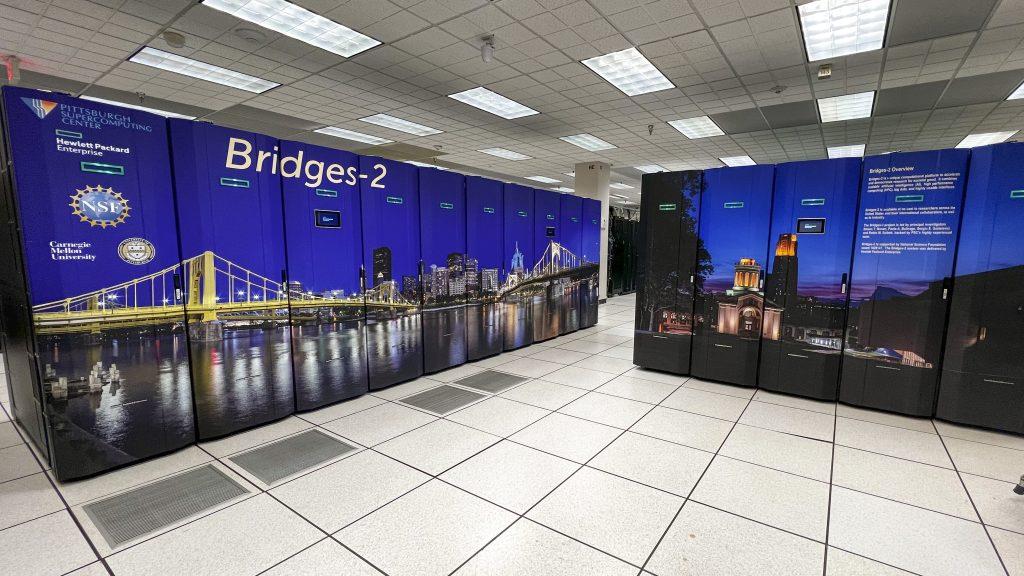
Additional GPU Capabilities Will Expand AI Research in Range of Scientific Fields
A $4.9-million award from the National Science Foundation has funded an upgrade to PSC’s flagship Bridges-2 supercomputer. The grant allows the center to add late-model powerful NVIDIA H100 graphics processing units (GPUs) to the system, further enhancing its ability to support research in and requiring artificial intelligence (AI), particularly in the context of massive data and high-performance computing (HPC).
“Bridges-2 is very popular with the scientific community,” said Barr von Oehsen, PhD, Director of PSC. “This expansion improves this already positive experience by offering more options for AI workloads. We can’t wait to see the science impact these new servers will enable.”
NSF initially awarded $10 million to PSC to build Bridges-2, which began production operations in 2021. In addition to massive Big Data and “traditional” HPC problems, the system was designed to supercharge development and application of AI methods, including machine learning (ML), to a range of scientific challenges of unprecedented scope and complexity.
Specifically, the new NSF award will add to Bridges-2 a pod of ten HPE Cray 670 nodes, with 8 H100-SXM5-80GB GPUs and 2 TB node memory each, interconnected by a high-performance Infiniband network. It will also enhance the data capacity and I/O performance of the Bridges-2 three-tiered filesystem, to support the expected increase in machine learning and data-intensive workflows.
“Bridges-2 has already enabled many impactful ML projects and projects involving ML and HPC using the existing V100-based GPU nodes,” said Sergiu Sanielevici, PhD, Director of Support for Scientific Applications at PSC and Principal Investigator in the Bridges-2 project. “Augmenting this capability with H100-based GPU nodes will significantly improve the performance of our community’s ML and HPC workloads.”
The quantitative jump in performance afforded by the new GPU nodes will enable scientific breakthroughs that are currently out of reach, in fields such as:
- safe and trustworthy AI
- image and speech classification
- biomedical discovery and health care research
- molecular and materials discovery
- environmental and sustainability research
The enhanced capacity and capability of the Bridges-2 GPU and data storage resources will also benefit the NSF effort to pilot the implementation of the National AI Research Resource (NAIRR) program, in which both Bridges-2 and PSC’s advanced AI supercomputer, Neocortex, are already resources. Along with enhanced performance, the new nodes will introduce innovative training and outreach capabilities and initiatives to the AI/HPC community and the NAIRR Pilot Project, in partnership with NVIDIA and HPE.
